The more you learn about bamboo, the more you come to realize how little you know about bamboo. Like the game of chess, it doesn’t take long to get acquainted, but it can require a lifetime to master. And unlike the sprawling series of Star Wars films available on DVD, you will never be able to collect them all.
With more than 1,200 known species of bamboo, you can easily find a dozen varieties to bring an element of Asian elegance to your idyllic garden space. And as you begin to recognize and appreciate the great diversity in the bamboo family of grasses, it’s not hard to develop an obsession. If you’re fascinated and compelled to always seek out new strains of rare, strange and stunning bamboo for your expanding garden, this article is for obsessive collectors like you.
Perhaps you started out with a bushy hedge of Phyllostachys, and watched it flourish with its luxuriant, privacy-providing foliage. And maybe you have a massive stand of Bambusa oldhamii, a dominating centerpiece, towering 50 or 60 feet over your quiet garden paradise. Then, of course, you need an exquisite specimen that you can admire more closely, at ground level. A modest grove of Buddha’s belly, with its delightfully bulbous internodes, will do just fine, or a Mexican weeping bamboo with its delicately cascading greenery.
Keep in mind, this is primarily a list of temperate bamboos. If you’re in Florida or Hawaii, or someplace with little or no risk of winter frost, you’ll want to check out this exciting list of Tropical bamboos for warm climates. And when you’re ready to go next level, you can read about Triple Hybrid Bamboo.
NOTE: This article first appeared in Sept. 2020, last updated in Sept. 2022.
The refined road to rare bamboos
The further your garden evolves and expands, the more refined your tastes will become. Like savoring a fine wine or a superior bar of chocolate, you will always be in search of the next best thing. In this way, bamboo can exploit the most insatiable aspects of human nature.
Indeed, you may find your discerning tastes leading you down the garden path. But fear not, an obsession with bamboo is one of the healthiest hobbies or habits you can take up. The quest for rare bamboo will foster a deeper connection with the natural world in general, and a better understanding of your local habitat in particular.
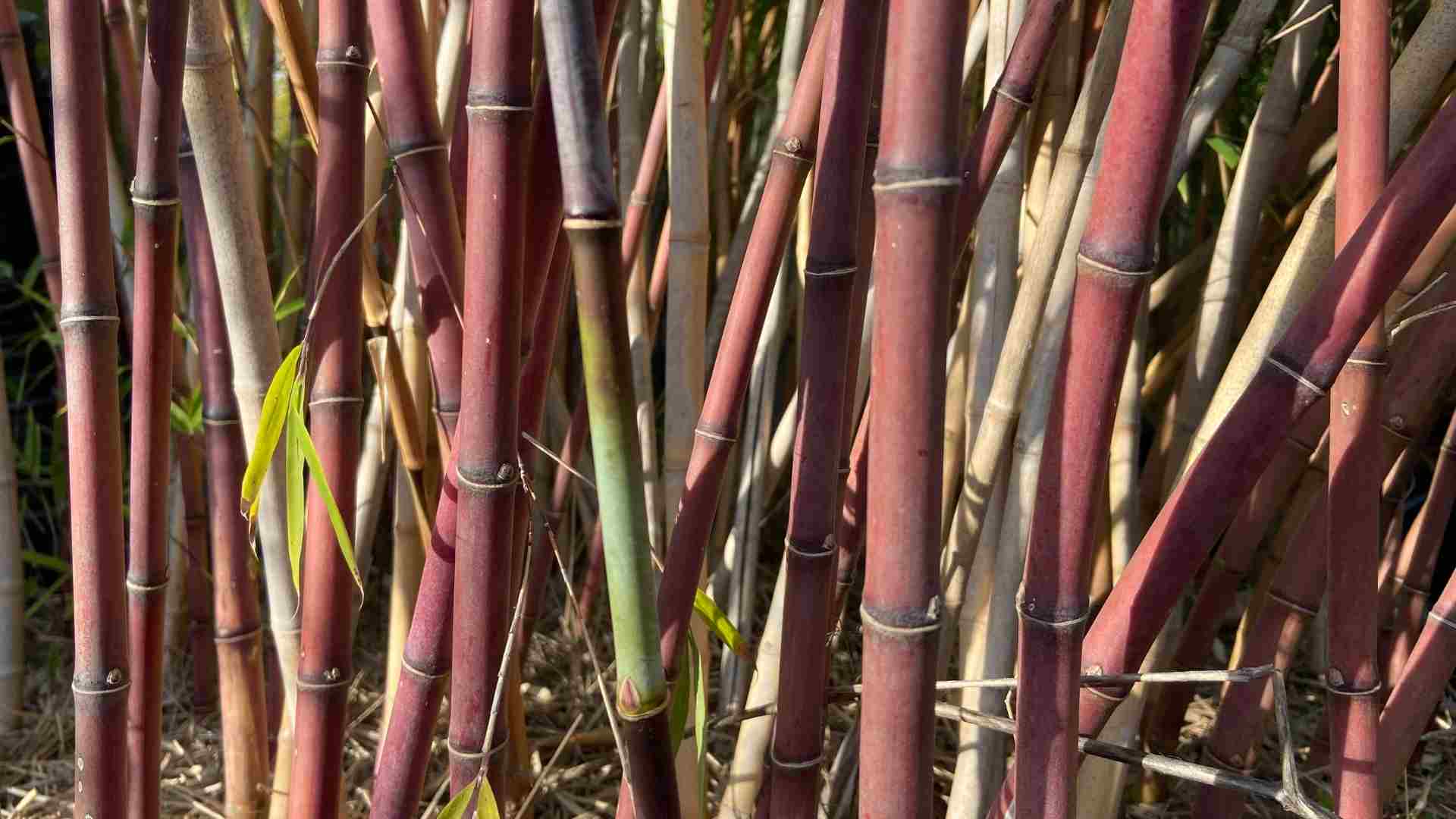
Like people, bamboos all have something in common, but each variety has its own distinct character and temperament as well. The greater assortment you cultivate, the more sensitive you become to the needs and expressions of each. Not only that, but local birds and beneficial insects are likely to take notice as well, enhancing the overall biodiversity of your backyard.
A directory of 9 rare bamboos
If variety is the spice of life, then let’s dish up some strange servings of bamboo. We list them below in alphabetical order. Naturally, every bamboo collector has different growing conditions, and different gaps in their garden melange. So some of these bamboo rarities will make more sense for you than others, depending whether you live in Southern California or Upstate New York, for example, and whether you’re looking for a giant new timber specimen or a curiously creeping ground cover.
1. Borinda papyrifera
For bamboo aficionados in the colder climate zones, this hardy clumper will make an excellent addition. It’s not easy to find a cold hardy, clumping bamboo. Fargesia is the first genus we think of when we look for a bamboo that can survive the snow but doesn’t have an aggressive, running growth habit. Not as resistant to freezing as the Fargesias, but this Chinese variety definitely prefers cooler climates, and it’s cold hardy down to around 10 or 15º F.
Also called Paper Bearing or Blue Dragon bamboo, this unusual species has a particularly distinct appearance that makes it genuinely worth collecting. The graceful culms, which can get about 2 inches in diameter and 15-25 feet tall, have a remarkable powdery blue coloring. And the culm sheaths, smooth and shiny, are especially pronounced, large and heavy enough to use like paper. The leaves are deep green.
See also Borinda fungosa, Chocolate Bamboo. This close relative of Blue Dragon also makes a beautiful specimen, with its brilliantly colored culms of maroon and deep magenta.
2. Chimonobambusa quadrangularis
Possibly the most common bamboo on this list of rarities, Square Bamboo is an almost essential specimen for any serious bamboo connoisseur. Chimonobambusa is a genus of running bamboo native to China and East Asia. This species grows about 10-20 feet tall with culms about 1.5 inches thick.
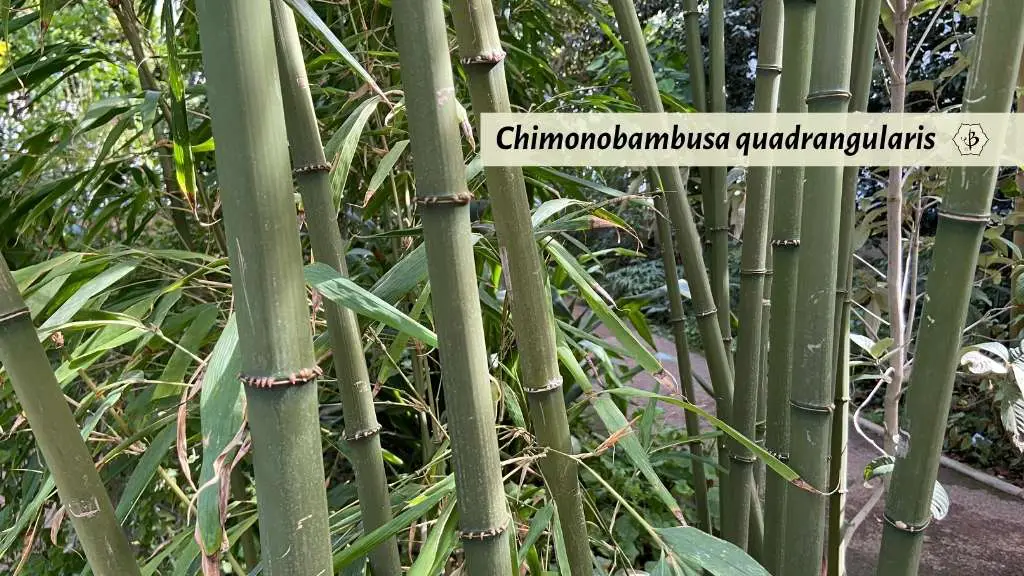
As the name implies, the culms of this bamboo are square rather than round, making it a standout in any bamboo garden. Also, the nodes are very pronounced, adding to the unusual appearance. Foliage is dark green and bushy, but doesn’t usually start until about 3-4 feet above the ground. It’s nice to keep the bottom few feet free of branches anyway, in order to better showcase the curious culm shape.
3. Chusquea culeou “Caña prieta”
Caña prieta is Latin for black cane, referring to the color of this bamboo’s fresh culms. On newer shoots, the culm sheaths, almost white, produce a strong contrast. Over time, most of the black fades to yellow, except at the nodes where the culms remain very dark. The result is an unusually colorful appearance.
Native to Chile, most Chusqueas have solid rather than hollow culms, making them all the more unusual. They are also surprisingly cold resistant for a clumping bamboo, hardy down to about 0º F. This compact plant grows about 10-15 feet high, with culms less than an inch in diameter.
4. Dendrocalamus minor ‘Amoneus’
With a name like Ghost Bamboo, you know that this species will be difficult to find. But it’s well worth looking for. D. minor is something of a dwarf among the genus Dendrocalamus, only growing 20 or 30 feet tall. But the coloration of its culms —grayish-green with striking variegations — make it an especially desirable specimen among collectors. Ghost bamboo is quite popular in northern Australia and very capable of haunting your imagination.
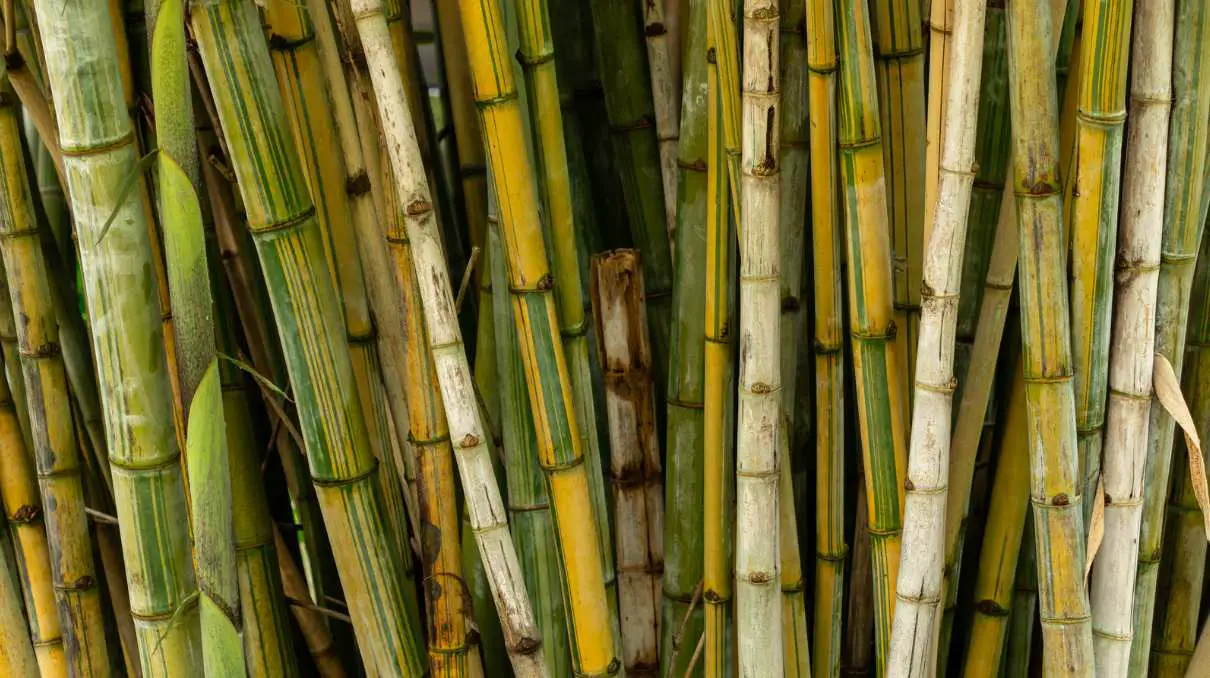
The original species, D. minor, is an impressive ornamental, but it lacks the distinctive striping of the ‘Amoenus’ cultivar. Though smaller than its giant relatives, this species is extremely fast-growing and grows surprisingly well in non-tropical conditions, including the Central Coast of California.
5. Indocalamus tessellatus “Giant leaf”
This exotic species is noteworthy for having the largest leaves of any bamboo. They can grow up to 2 feet long and as much as 4 or 5 inches wide. The plant itself, however, is quite compact, just 6-8 feet tall. Small but spectacular, this is a fine complement to any rare bamboo collection.
The gigantic leaves make for a bushy appearance, also useful as an effective and eye-catching privacy hedge. An especially good choice when a low hedge is all you need. The plant is a runner, but not very aggressive. As a runner, it’s also quite cold hardy, down to about -10º F. And it loves to grow in the shade.
6. Phyllostachys edulis ‘Heterocycla’
The economically important and widely grown Moso bamboo, Phyllostachys edulis, has a number of subspecies, each with its own unusual and distinct characteristics. Heterocycla, also called Tortoise Shell bamboo, is one of the most stunning and highly sought after. The internodes form an alternating zigzag pattern that resembles a turtle’s shell.
Like all Phyllostachys, this a running variety and fairly cold hardy. It’s also a formidable timber type, reaching heights of 50 feet with 4″ thick canes.
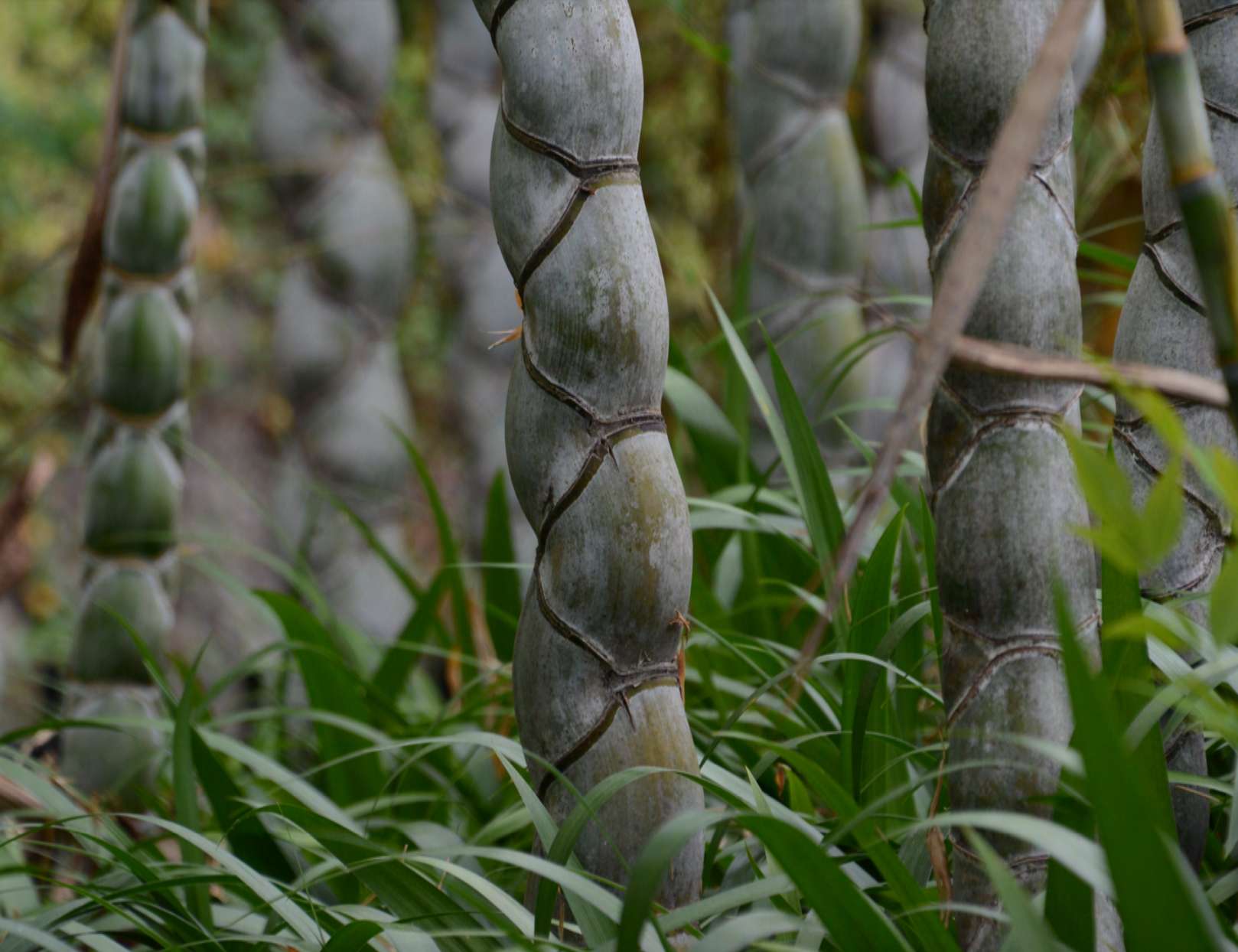
7. Sasa tsuboiana
Sasa is a genus of compact bamboo of Japanese origin, including several cold-hardy, running varieties. Typical of dwarf bamboos, which usually grow under some forest canopy, most species of Sasa do very well in the shade. S. Tsuboiana is a particularly robust ground cover that can get 5 or 6 feet tall, with luscious deep green foliage. It makes a beautiful addition to the garden, providing a striking contrast alongside taller bamboos with buttery yellow culms.
Took a look at Sasa kurilensis for another eye-opening specimen of this genus. This exotic variety is the only known bamboo species native to Russia. It also grows in the northernmost islands of Japan. While you’re at it, check out our articles on Hiroshima Bamboo and Bamboo for Japanese Gardens.
8. Shibataea kumasaca
Another shrubby, low-growing variety, with stubby, rounded leaves, this one barely even looks like bamboo. The casual onlooker might not even realize they were looking at bamboo. Ideal for a low hedge, this rarity grows especially dense foliage, with pencil-thin culms that get about 5-7 feet tall. Despite its diminutive size, this species is a runner, and it may become invasive if not properly contained. Tolerates shady areas and cold hardy down to 5º F.
(See the featured image at the top of this article.)
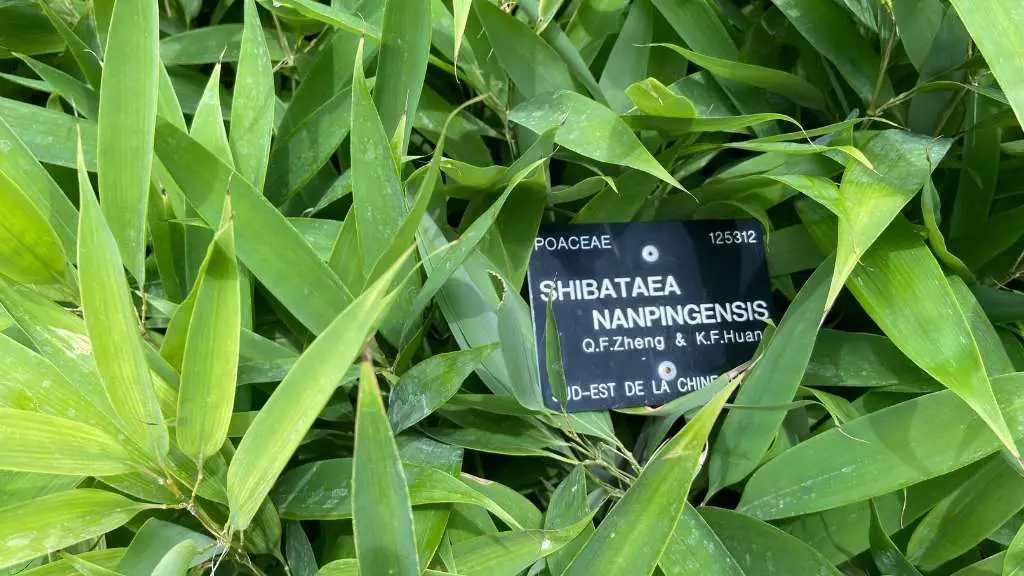
9. Yushania anceps “Pitt white”
Narrow leaves and tall, slender culms give this rare bamboo a most graceful and fountain-like appearance. The bluish-green canes get about 15-20 feet tall, but less than an inch thick, and produce a profusion of bountiful foliage.
Technically, Yushianas have the rhizomes of a clumper, but this one spreads quickly, what we call an “open clumper”. Averse to high heat and humidity, this variety prefers a cooler climate and is cold hardy down to around 0º F.
Bonus Bamboo: Raddiella vanessiae
Belonging to the unusual Olyraea tribe of herbaceous (non-woody) bamboos, you’re unlikely to find this one anywhere outside of French Guiana. R. vanessiae is probably the smallest bamboo species of all, in the size of both its culms and its leaves. Native to the savannas of South America, it was only first identified about 15 years ago. But unfortunately for fanatical bamboo collectors, even specialty nurseries don’t carry these neotropical, herbaceous species.
Further reading
If you enjoyed this article about rare and unusual bamboos, please consider sharing the blog post or subscribing to our mailing list. You might also be interested in some of the following links:
- Best bamboo for construction
- Species of solid bamboo
- Bamboo with longest internodes
- Bamboo and carbon sequestration
- Best cold hardy bamboos for snowy climates
- Growing bamboo indoors
- Bamboo flowering
FEATURE IMAGE: Shibataea kumasaca, short, shrubby and delightful

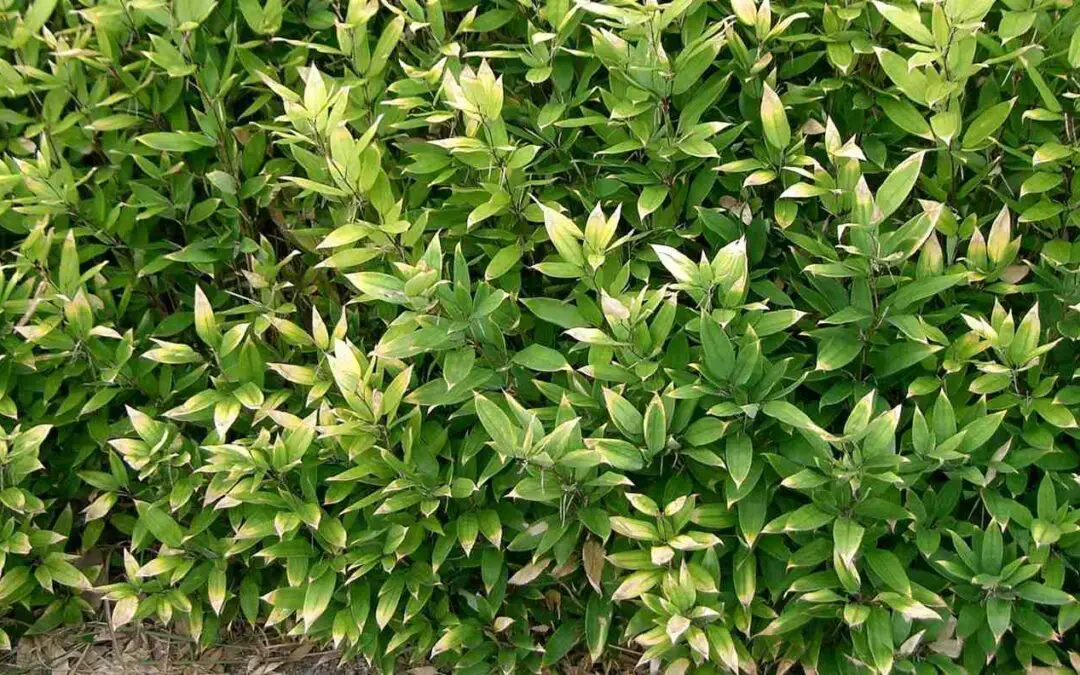
























Dude. Super insightful article. Really appreciate you sharing your knowledge with the world. Keep up the great work. Many thanks!
-Firefighter Nate